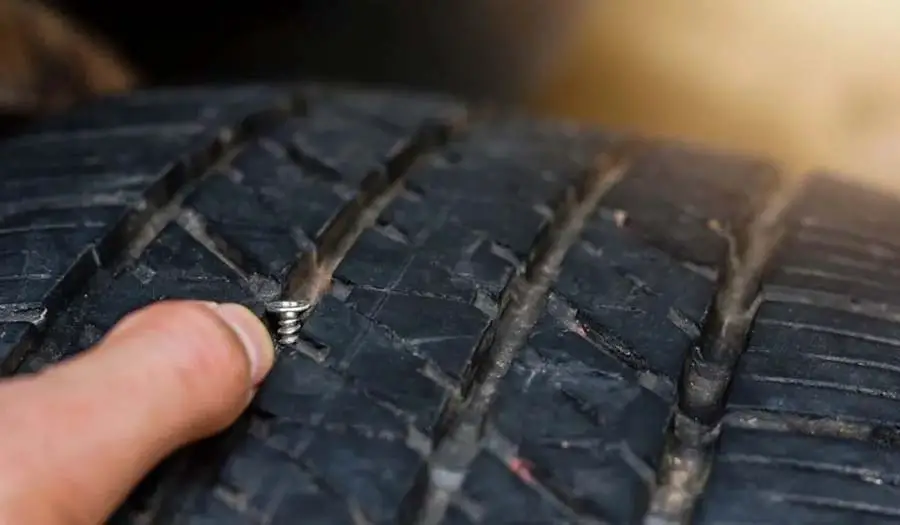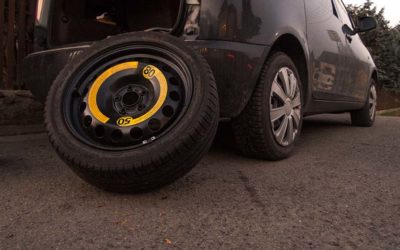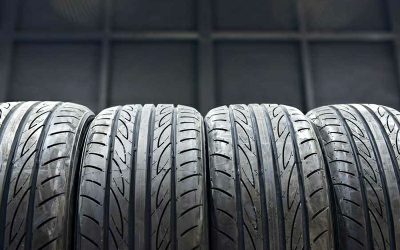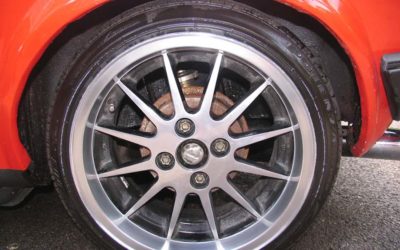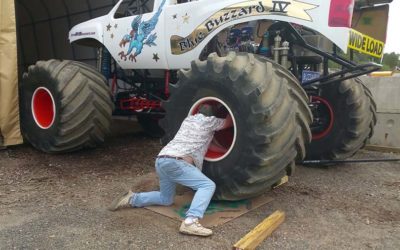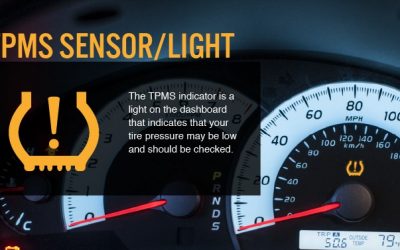A slow leak in tires happens when the air gradually deflates out of the tire. It commonly arises in all vehicles. The leaking signs are quite obvious to detect. You will encounter a slow tire leak when three or fewer PSI are missing in a tire.
But never let the deflation level pass 25% of the suggested PSI. In the worst case, you might put yourself at high risk of a terrible crash.
Thus, all car drivers need to equip themselves with full insight related to a tire leak.
Luckily, you have arrived at the exact place. This article will supply all the needed information concisely. By that, you could decrypt the hidden causes and how to fix a slow leak in a tire.
What Are Causes Of A Slow Leak In Tires?
Slow-leak tire causes vary due to different situations. In the following part, we will introduce three typical reasons you usually run into:
Wheel Damage
The first element causing the slow leaking tire relates to the damaged wheel. Once you accidentally hit the curb, pass over the step bump at high speed or run over the potholes, the mounting surface may partly deform. In other words, the bead-rim contacting area gets damaged.
By then, the tire easily gets pulled away from the metal surface, And the prolonged corrosion will result in slow deflation.
Besides, the bent wheel also brings about some remarkable leaking. Because the not-rounded wheel makes your vehicle vibrate more strongly than usual, more leaking spots appear.
Valve Stem Damage
Another common reason why a tire has a slow leak would come from valve stem damage. It is obvious since the tire typically goes along with that valve as a matching pair. This part usually gets worn out after a fixed usage time, causing slow air leakage.
More specifically, valve stems go bad due to dislocation or overwhelmed exposure to chemicals like road salt while driving. Over a while, they will rust terribly. Then, the constant air leakage will stem from the corroded body or base of the valve.
The ultimate solution is to immediately buy and install a new set of tire and valve stems at the tire shop.
Puncture Damage
Tire punctures seem like the most likely root for leaking out the air. As you can see, this realistic possibility makes up for a high percentage, right?
Once driving out, you may unexpectedly run over some sharp objects like nails, pieces of debris, or pieces of glass. Interestingly, they will not create a big hole as you think to cause a blowout immediately. Instead, they will get stuck tightly inside the tire.
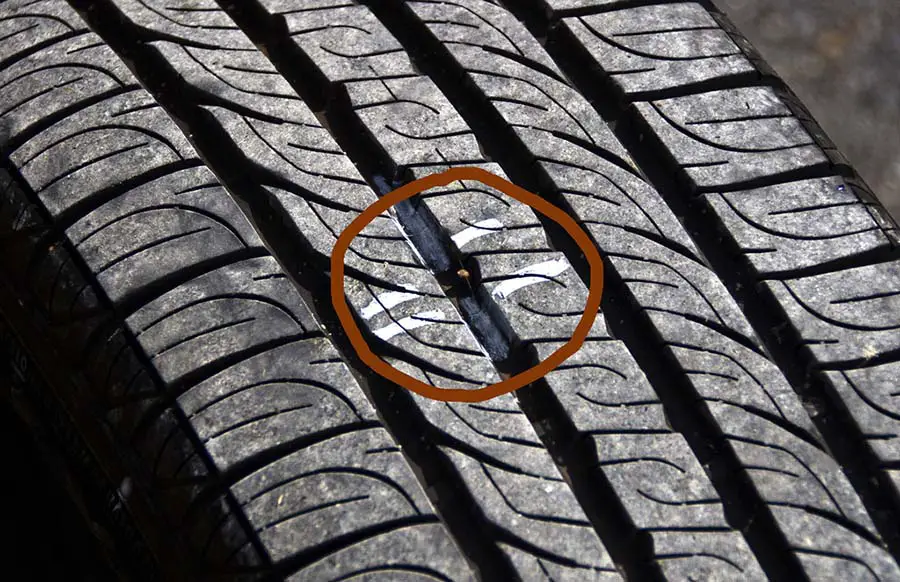
That stuck, on the other hand, helps to stop the tire from leaking out and turning into a flat tire.
Many bad consequences may arise from the listed causes. In particular, a leaky tire will lower the tire air pressure, thereby diminishing the fuel economy.
Not to mention, the handling of your car will spiral down horribly. That weakened ability makes it hard to control the steering wheel on wet or snow days.
Therefore, you always need to notice and check if there are any problems before driving away. Keep reading to explore how to timely locate the air leak and offer the best fixing ways.
How To Navigate The Air Leak
Even if you are a novice driver, you can use the approaches below to navigate the leaking area as it is very easy to put into practice.
Listen To Or Touch The Tire
These ways seem like the easiest ones to track down something going wrong in the tire. All you need to do is to come closer to the tire position and hear the hissing sound. If there is that kind of leaking sound, your tire is gradually flattening out.
Apart from listening, touching is also a quick evaluation. This way enables you to detect the leaky spot directly because you will touch the surface and feel if any hole appears.
Apply Soapy Water
If the listening and touching did not work well, move on to the second approach – soapy water. First, prepare a mixture of dish soap and water, then pour that mix in a spray bottle. Before spraying, keep in mind to thoroughly cover up the entire rim and tire valve.
Now, let’s spray the soapy water on the whole tire, especially the tire tread and tire sidewalls where the leakage mainly occurs. After a few minutes, the bubble starts to release where the air comes out.
Use Water
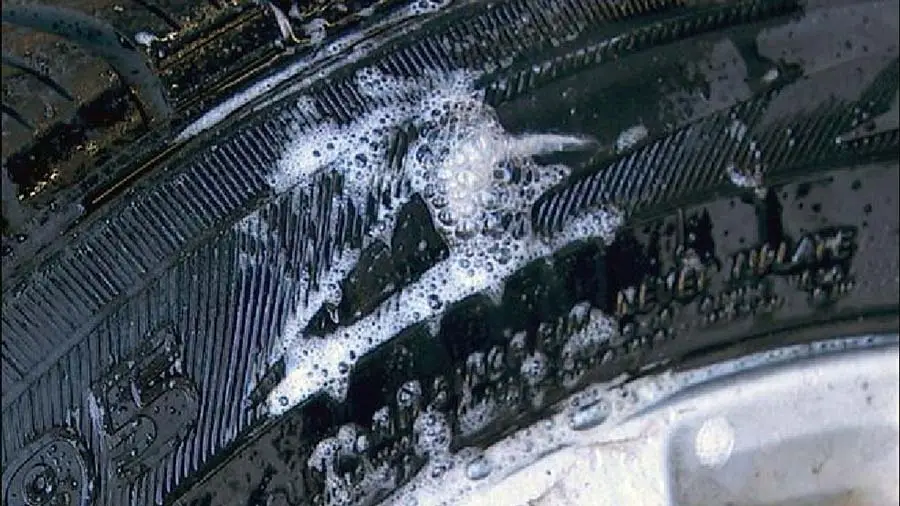
In addition to those two methods, we recommend another useful way to identify the leaky holes. But it might take you some effort to do.
Take a big container with enough water. Then, soak the entire tire into the water and observe the changes. By that, we mean the bubbles start appearing in the leaky area.
Let’s turn the tire over and test the other side if nothing happens. Your tire will still be usable if the water stays normal.
Other Diagnosed Methods
To acquire a high accuracy, we offer two below methods to diagnose the slow leak in tires.
Tire pressure monitoring sensor (TPMS)
Place this sensor on your car. The lit sensor means the tire is deflating. Quickly go and inflate your tire. After a few days, check the TPMS once again. If the light is still on, a slow tire leak has appeared.
Manual pressure checking
To optimize safety, test the air pressure manually every two weeks or less. Use the tire pressure monitoring system to diagnose precisely. If your tire remains constantly underinflated, you have a tire slow leak.
How To Fix A Slow Leak In Tires
You can utilize the tire plug or patch kit for a stop-gap. Those objects will work out if you got a puncture on the road and need an instant tire leak repair. They enable your tire to inflate until you find the nearest repair shop.
For a permanent solution, you need to replace a whole old set of tires. If the damaged air valve stem or mounting surface arises, you need to visit the professional garage for a safe repair.
Bottom Line
Regarding driving, safety becomes the top priority no matter what. Thus, never underestimate or ignore abnormal tire issues. Even a small one, like the slow leak in tires problem, can increase the risk of crashes if there is no timely repair.
Also, grasping all the probable causes will support you greatly. Based on that, you may effectively apply the proper mending method for slow tire leaks.
Thank you for reading until this end, and hoping the information above is useful for your practical application.

